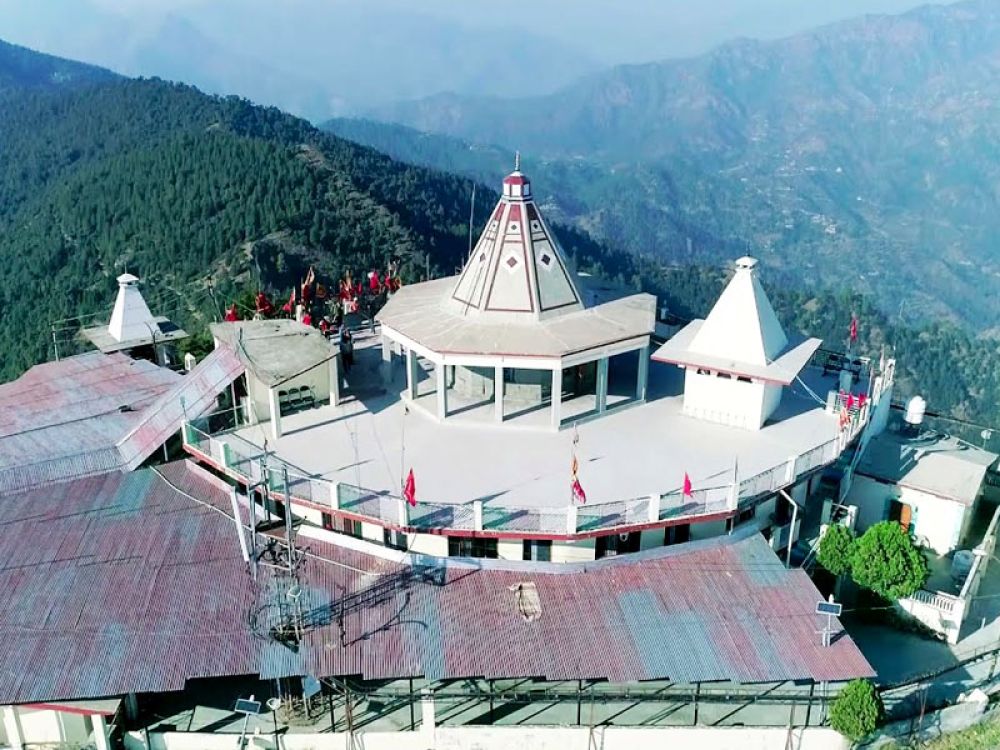

The Chandrabadni Temple, perched atop the Chandrabadni mountain in Tehri, Uttarakhand, India, commands a panoramic view of the Garhwal region and entices tourists with both spiritual radiance and natural beauty. This temple, dedicated to Goddess Sati, is considered one of the revered Shakti Peethas in Hindu mythology. The history of tourism associated with Chandrabadni Temple has ancient roots that run deep into the spiritual and cultural practices of India.
Historically, the Chandrabadni Temple has been a significant destination for pilgrims for centuries. According to legend, the torso of Goddess Sati fell here when Lord Shiva was carrying her body, hence establishing it as a place of worship and reverence. Over time, the temple has become a major stop for pilgrims undertaking the Char Dham Yatra and is often visited during the Navratri festival, drawing devotees from across the nation.
The ancient architecture and the serene ambiance of the temple provide a unique window into the past. The stone carvings and inscriptions found here are indicative of the craftsmanship and spiritual dedication that has gone into constructing this sanctified place. Despite being relatively off-the-beaten-path for general tourists, those who seek a blend of spirituality and the tranquility of the hills arrive here to pay homage and enjoy the breathtaking surroundings.
In recent years, the government and local communities have made efforts to promote the Chandrabadni Temple and its environs as a tourist attraction, recognizing its potential to enhance cultural tourism and support local economies. With improvements in road infrastructure and the availability of basic amenities, the temple has witnessed an increase in footfall, diversifying its appeal beyond just religious tourism.
Eco-friendly and Adventure Tourism: Given Tehri's natural landscapes, there's a rising trend in promoting eco-friendly and adventure tourism in the area. Tourists can indulge in trekking, camping, and bird watching, thus enjoying the spiritual journey complemented by adrenaline-pumping activities. This conscious blend of cultural depth with environmental appreciation represents a key trend in the area's evolving tourism narrative.
Local Culture and Festivals: The temple has also become a focal point for experiencing the local Garhwali culture. Festivals and fairs are occasions where tourists can witness traditional dances, music, and attire, offering an immersive experience into the local way of life.
Digital Presence and Accessibility: With the digital age reshaping tourism, the Chandrabadni Temple has seen a digital push, with online platforms showcasing its majesty and easing the way for potential visitors. The temple's digital visibility has made it more accessible, inviting a broader audience to explore its history and spirituality.
The rise in tourism has put a spotlight on the need for sustainable practices to preserve the sanctity and environment of Chandrabadni Temple. Programs that emphasize responsible tourism, waste management, and conservation of the local flora and fauna are increasingly vital to ensuring future generations can also enjoy the temple's offerings.
The Chandrabadni Temple in Tehri, with its historic significance and picturesque setting, remains a gem in Uttarakhand's crown. From a largely spiritual sojourn to an eclectic mix of adventure and culture, the temple's tourism timeline reflects both reverence and responsibility, ensuring that its story continues to captivate hearts and spirits for years to come.